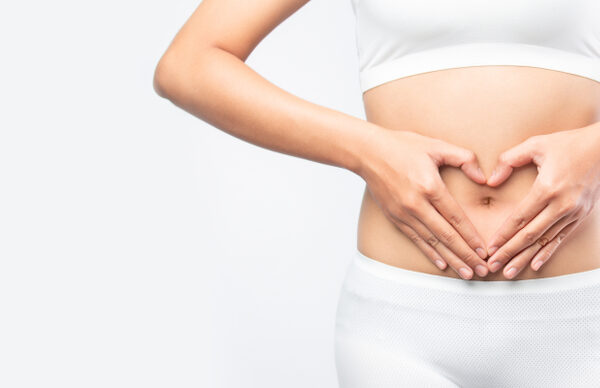You do not have to have an implant to burst in order to start developing symptoms of BII. The reality is that every woman on this plant who has a breast implant will have chemicals leaking from that implant, even if it is intact.
Problems can come from leaks, off-gassing and other chemicals. Many women react to many components such as the styrene in implants and not always the silicone. The silicone itself is not always the big issue, and I’ll tell you now, this is more complicated than what’s it made out to be.
If you want to really get into it I urge you to watch the Breast Implant Health Summit for expert advice and information on breast implants and the health consiquences.
According to a study published in Clinical Medical Reviews and Case Reports (Kappel, 2016) silicon from breast implants have been found in high amounts in organs and tissue such as the colon, small intestine, pancreas, stomach, breast, bladder, gallbladder and lymph nodes, with lesser amounts found in the kidneys, spleen, thyroid, lungs, ovary, uterus, skin and heart.
Let’s look at why this is important.
THE CHEMICALS YOU ARE INTRODUCING TO YOUR BODY
So, you think it’s just silicone? Think again.
Silicone is the main ingredient used in the gel which is a combination of the mineral silica and other chemical compounds. It is often these other chemicals that are responsible for the symptoms experienced in those with Breast Implant Illness (BII).
Below is a long list of ingredients found in silicone breast implants that women are exposed to and many women react to:
Organosilicic Compounds
- Cyclotetrasiloxane
- Hexamethyl Trisiloxane
- Octamethyl Cyclotetrasiloxane
- Octamethyl Silanol
- Trimethyl Tetrasiloxane
- Decamethyl Cyclopentasiloxane
- Decamethyl Pentasiloxane
- Dodecaemthyl Siloxane 1 and 2
- Cyclotrisiloxane
- Hexamethyl Cyclohexasiloxane
- Dodecamethyl Cycloheptasiloxane
- Tetradecamethyl Heptasiloxane
- Hexadecamethyl Hexasiloxane
- Hexadecamethyl Heptasiloxane
- Hexadecamethyl
Hydrocarbons
- Hexane
- Cyclohexane
- 4-Methyl octane
- 3-Ethyl hexane
- Benzene
- Decane
- 1-Nonadecene Ethylbenzene
- p-Xylene
- m-Xylene
- o-Xylene
- Dimethoxymesytilene
- Tetradecane
- 1-Fluoropropene
Aldehydes
- Hexanal
- Nonanal
- Decanal
- Benzaldehyde
- 4-Methylbenzaldehyde
Ketones
- Acetone
- Cyclohexanone
- 6-Methyl-5-hepten-2-one
- Diethoxyacetophenone
Alcohols
- 1-Hexadecanol
- 1-Butanol
- 2-Ethyl hexanol
Esters
- n-Octylacetate
- Butylisobutyratel
- Triacetin
Organic Acid
- Acetic acid
- 2-Methyl hexanoic acid
- Pivalic acid
- Butanoic acid
- Crotonic acid
- 2-Ethyl Hexanoic acid
Terpenes
- d-Limonene
- Junipenen
Other
- Chloroform
- 1,2-Dimetoxypropane
- 2-Acetoxyethanol
- 2-Butoxyethanol
- Phenol
This can obviously differ from manufacturer to manufacturer, so below are the ingredients listed in silicone gel breast implants that was manufactured by Dow Corning Corporation:
Dow Corning Corporation Silicone Breast Implant Ingredients List
- Methyl Ethyl Ketone (neurotoxin)
- Cyclohexanone (neurotoxin)
- Isopropyl Alcohol
- Denatured Alcohol
- Acetone (neurotoxin)
- Urethane
- Polyvinyl Chloride (neurotoxin)
- Amine
- Toluene (neurotoxin/carcinogen)
- Dichloromethane (carcinogen)
- Chloromethane
- Ethyl Acetate (neurotoxin)
- Silicone
- Sodium Fluoride
- Lead-based solder
- Formaldehyde
- Talcum Powder
- Oakite (cleaning solvent)
- Methyl 2-cyanoacryltes
- Ethylene Oxide (carcinogen)
- Xylene (neurotoxin)
- Hexon
- 2-Hexanone
- Thixon-OSN-2
- Stearic Acid
- Zinc Oxide
- Naptha (rubber solvent)
- Phenol (neurotoxin)
- Benzene (carcinogen/neurotoxin)
- Lacquer Thinner
- Epoxy Resin
- Epoxy Hardener 10 and 11
- Printing Ink
- Metal Cleaning Acid
- Color Pigments as release agents
- Heavy metals such as aluminum, tin, lead, and platinum
- Silica
BIOCHEMICAL CONSEQUENCES OF BREAST IMPLANT CHEMICALS
Chemicals can be categorized according to their functional groups which means that chemicals within the same category have similar effects on your biochemistry, enzyme function and gene expression. Thus, the signs and symptoms and effects on your health is very much the same.
Aldehydes
Aldehydes can be classified as a neurotoxin as it is the same chemical compound that is found in alcohol, yeast infections, and chemical exposure such as paints and perfumes. Have you every experienced being super-sensitive to perfumes or paint fumes?
That would be the aldehydes you are reacting to.
Aldehydes need to be detoxified through liver phase 2 detoxification processes utilizing the Aldehyde Dehydrogenase (ALDH) enzymes that requires thiamine (vitamin B1) and niacin (vitamin B3) as cofactors. These nutrients are highly important in other biochemical pathways such as histamine clearance.
In alcohol it is responsible for giving you hangover symptoms such as headaches, fatigue, brain fog, nausea, etc. Sound familiar?
This could be one reason why a lot of women who are experiencing symptoms after having breast implants become more sensitive to smells, chemicals and histamine-foods, and develop symtpoms of Mast-Cell Syndrome (MCS).
Hydrocarbons
A hydrocarbon is an organic compound consisting entirely of hydrogen and carbon. Hydrocarbons such as benzene and xylene compounds require a healthy phase 2 liver conjugation pathway for detoxification which requires nutrients such as glycine, taurine and vitamin B5.
These nutrients are also required for:
- Making red blood cells – red blood cells transports oxygen throughout your body.
- Bile production – bile helps to detoxify excess estrogen and other hormones and chemicals from the body, as well as manage bacteria in the small intestine and keeping your digestive system healthy.
- Adrenal health – the adrenal glands provides energy, helps to control inflammation, makes sex hormones such as estrogen and testosterone, and helps us deal with stress in our daily lives.
- Brain health – by binding to receptors in the brain some of these nutrients have the ability to calm the nervous system down.
If these resources are channelled towards getting hydrocarbons out of the body it makes less of these nutrients available for other functions such as the ones listed above.
OFF-GASSING IN SILICONE BREAST IMPLANTS
The following statement was made in a study published in the Journal of Pharmaceutical and Biomedical Analysis (Beretta, 2014):
Conversely, the total amount of the major polycylodiemthyl- siloxane species (D4-D7) series, released at T = 37 °C by the PIP gel and elastomeric shells, was around 3x higher than that released by the approved implant, highlighting the higher potential of PIP silicone to release these species by simple passive diffusion mediated by their evaporation at physiological temperature.
This is disturbing. Why?
Because it means that when silicone breast implants were heated to body temperature the off-gassing of these chemicals were 3x higher than when tested in a temperature controlled environment inside a laboratory (most likely with air-conditioning).
It illustrates how safety studies mean nothing if not conducted in context with their environment, and it also shows that these women were not made aware of the tremendous amount of chemicals they were introducing to their bodies. Most women, I dare say, would think twice before getting these implants if this information were disclosed to them prior to surgery.
‘BLEEDING’ OF SILICONE BREAST IMPLANTS
‘Gel Bleed’ is something that occurs with all types of silicone implants, no matter the brand or manufacturer. Some of the later models of implants have a ‘bleed retardation’ layer which seems to slow it down but by no means stop it (Hein, 1992). It seems that this ‘bleeding’ eventually softens the shell of the silicone breast implants increasing the risk of spontaneous rupture.
However, a breast implant does not have to rupture before releasing chemicals into a woman’s system. Through ‘bleeding’ and ‘off-gassing’ it releases chemicals at a slow consistent rate which then accumulates over time in the tissues, cells and the lymphatic system.
HOW SILICONE IS FOUND INSIDE THE BODY
Plaques
Often silicone is found in plaques where it is combined with the metal titanium which is often used in the sealing patches of the silicone implants. These plaques are usually either encapsulated in collagen which is a natural reaction of the body to isolate an injury, or found surrounded by blood vessels.
The risk of these plaques remain as they can embolise or increases fibrosis within internal organs and interfere with organ and cellular systems which is why so many women experience a wide range of symptoms with breast implants.
Droplets
Smaller molecules of siloxane monomers and oligomers are found more at a cellular level where it can interfere with many biochemical pathways. This often makes it hard to link silicone breast implants to general symptoms as a result of these interferences which is why more research into this area is needed.
Fat Distribution
The chemicals found in breast implants have a high affinity for fat-rich tissues such as fat, liver, brain and cell membranes. Since there is a lot of fat in female breast tissue it makes sense that a lot of these chemicals may store in the breast tissue. This is an important consideration for women who have breast implants, or who have had them removed, when it comes to breast feeding.
SYMPTOMS OF BREAST IMPLANT ILLNESS
Symptoms of breast implant injury is not just localized in the breast. In fact, it rarely is. Most symptoms associated with breast implant injury is actually more systemic, such as:
- Autoimmune disease
- Rheumatoid arthritis
- Chronic fatigue syndrome
- Multiple Sclerosis-like symptoms
- Psychological disturbances
FDA STARTS TO TAKE SOME RESPONSIBILITY
We believe that the FDA is really constructive in finding solutions and ways to make breast implants safer for women at this stage. They seem to start listening and also interested in more information such as adverse health outcomes.
We’ll see where this goes.
Day 1:
Day 2:
WHAT’S HAPPENING WITH LAW-SUITS?
Hundreds of thousands of women have claimed they have been injured by silicone breast implants over the last 30 years. It has largely been ignored as women imaging their symptoms or being unrelated to the breast implants even though symptoms correlated with the insertion of these implants.
Until recently when the FDA in the USA could not ignore it any longer and started to listen.
As early as the 1980’s the consumer advocacy group Public Citizen started warnings that breast implants caused cancer which prompted the FDA to classify these devices as a Class III device which is the highest risk category. However, this took 6 years to finalize illustrating how slow these processes can be and how many more women were put at risk because of inaction and beaurocracy.
The 1990’s saw a flood-gate open with patient injury lawsuits and class actions against companies who manufacture breast implant devices. This prompted Dow to file for bankruptcy in 1995.
Up until 2012 only Johnson & Johnson and Allergan had FDA approval to sell breast implants in the USA.
In 2019 Allergan started to recall its Biocell breast implants after being linked to a rare BIA-ALCL cancer, with more law-suits following from women who’ve had this implant inserted. As of September 2018 there has been 457 BIA-ALCL cancers that have been linked with these breast implants.
Treatments:
- K laser
- Massage
- Sauna
References:
Court defines ‘breast implant’ in Dow Corning’s $2B product liability saga



